What Sort Of Spark Plugs Suit Pakistani Driving Conditions The Best
People who buy used cars or even new cars and are car lovers tend to do some basic modifications to their car. Even if you are not a car lover, you care for mileage and there is a high chance that you considered installing those expensive after market spark plugs in your car. Here comes the great debate of spark plugs. Do they really work? The expensive ones? Or is it just another marketing strategy by the companies?
Well, there are mixed opinions about it on the internet. Some people have experienced absolutely no power and mileage gains. Instead badly affected it so they reverted back to their original spark plugs. However, some people praised their new expensive plugs supporting their points with better acceleration and mileage. However, a majority didn’t feel any change in their car whatsoever.
The properties that define the quality of a spark plug include, electrical conductivity, heat resistance, the gap between their electrodes and the material of the electrodes.
The Gap
The longer the gap between electrodes, bigger the spark. So a long gap is good as it burns, let’s say, all the fuel in the chamber and you get better acceleration and better mileage. But cars with high boost usually forced induction and cars with weaker ignition system are advised to use smaller gap spark plugs to avoid misfire.
Heat Range
Heat range is the operating range of a spark plug. A “hot” spark plug keeps more heat in the tip of the plug inside the cylinder while a “cold” spark plug keeps more heat out of the tip of the plug. If the operating temperature of your car is high and you fit it with a wrong spark plug, the hot spark plug will cause it to auto-ignite which will cause a knock. On the other hand, a colder spark plug tip will cause electrically conductive deposits to form on the tip making it less efficient. This is exactly why professionals advise you to use the spark plugs mentioned in your car’s manual only.
People in Pakistan don’t usually have their car’s manual so they just risk everything by reading reviews on forums. To some of them, their car’s performance and mileage increased noticeable. While others think expensive plugs do not affect performance, they are just long-lasting. For example, you need to change normal copper spark plugs at 25,000 to 30,000 km. The expensive ones, like iridium might last your 70,000+ km or so. Plug’s life depend a lot on fuel quality as well.
Please let us know about your experiences of expensive aftermarket iridium and platinum plugs

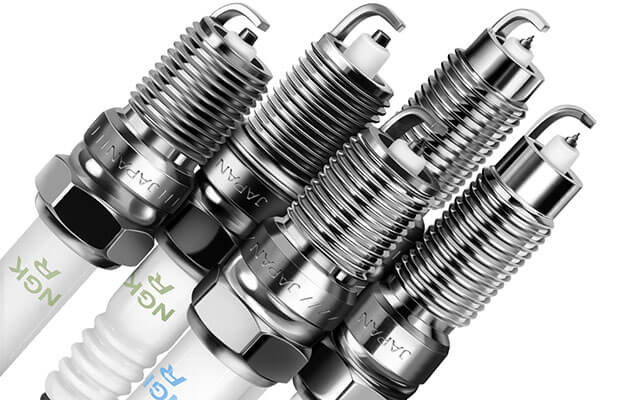
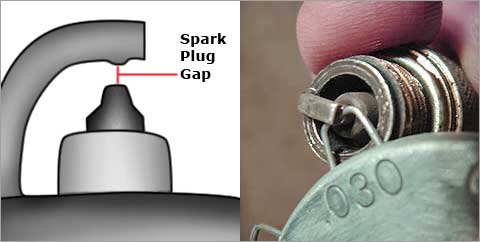
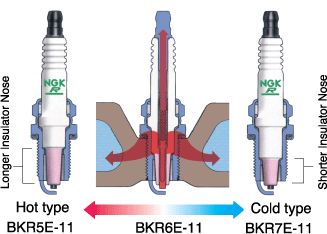
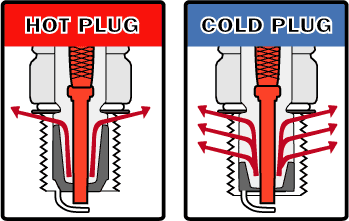
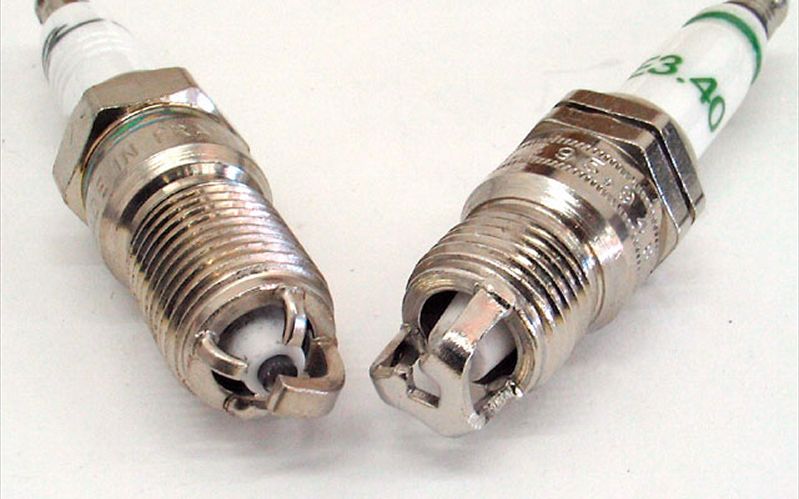

it differs from car to car….but cars having more cold running i.e short trips,direct fan etc shud use hot plugs …
As per the title What Sort Of Spark Plugs Suit Pakistani Driving Conditions The Best.
Bosch Super 4 FR78X and Bosch Super 4 WR78 (the only difference is the size of spanner used to fix them).
Compare them with NGK BP6xxx or Denso equiv. which are factory recommended on most Japanese cars in the owner’s manual, and have 10,000 km specified life, and if you run them into the ground will serve you till 18,000 km.
These Bosch 4-tips cost 2.5x the OEM recommended ones, come with a specified life of 50,000 km (written on the box) and will survive till 65,000 km (personal experience) before they start missing on load.
Not only the cost per km is lower, there are other benefits as well:
1. No need to adjust plug gap, therefore no compromise b/w CNG and petrol setting.
2. Electrodes do not get burnt.
3. Most efficient combustion, so engine idle race can be set a bit lower (on CNG you have to set it a bit higher so the engine feels high race when you use it on petrol).
4. These plugs deal with plug fouling (rich mixture) and oil splashing (if the engine is weak and burning oil) much better, everything is burnt quickly and engine is restored to full power very quickly after an event of oil splashing.
5. Easier starting in winters or summers when the engine overheats after a long running and makes it difficult to start after a highway stop.
6. Plugs maintain optimum performance for a very long time. In other types of plugs, the first few thousands km (6000 km around) are very good and then the performance drops, but with these Bosch’s, even missed tune-ups are not a problem. Performance does not drop as you near the 10,000 km mark, but only drops once you do 55,000 km, which are 10% more than the specified life. Every time you take them out for general cleaning there is no discoloration of electrode or insulator, and no residue of combustion except a little white ash. No need to file or sand blast during the entire design life.
7. In the event of an overtake, these plugs would allow you to rev very hard before stuttering (stuttering would make you want to change the gear to get lower RPM).
8. These plugs would cover up for a weak ignition coil. It means that standard NGK BP6xxx would miss if the coil is weak (old car) but you could put in these plugs to compensate, as coil used to be an expensive replacement (these days it has become cheaper).
On the other hand, NGK BPR6EP is a platinum tipped replacement for standard BGK BP6xxx plugs. The only difference is the price and that it promises 100,000 km specific life. They cost 3x the money of NGK BP6xxx and promise the 10x of specified life, which would make cost per km very less, but they do not offer those other benefits which can be seen with the Bosch 4-tip.
The Bosch 4-tip can also be bought in platinum tip. It is called Bosch Platinum plus 4 series. But it is not easily available and also more expensive, so it does not make economic sense. When you can get better performance and 5x the life in 2.5x the cost, why get better performance and 10x life in 10x the cost.
Iridium tip plugs are yet another story, because they promise 10x the life but are 10x more expensive than standard electrode plugs, so they do not make economic sense in cost per km.
Therefore from experience, I must say Bosch Super 4 4-tip (standard electrode metal) plugs are the best for driving ease, cost per km, longevity and mental comfort.
The same plug was fitted to generator (some generators take motorcycle plugs) and the results improved in the sense that generator could take sudden overload without stalling.
Important: All these experiences are on basic Suzuki and Toyota engines, which come specified NGK BP6ES or BP6EY etc. as standard. The newer engines such as Honda come factory-fitted with iridium tipped plugs marked for 100,000 km specified life, somebody else may share about their experience with alterations to those engines.
Summary of what I have seen is, number of electrodes does matter more than the type of metal. Country of origin (Bosch vs Japanese) also matters.
………………
About the article: It notes replacement of standard copper electrode plugs at 25,000 to 30,000 km. Where does the author get this figure, as owner’s manual of each car recommending these plugs as factory replacement calls for replacing them at 10,000 km. In addition, the article talks about iridium plugs with 70,000 km replacement interval. Where does the author get this? As iridiums and platinums both are usually specified for 100,000 km, and a bit lesser if poor quality fuel is used. (Platinums may make more economic sense because those are 1/3 the cost of iridiums).
I just want to know,since I have 2014 Honda Civic Vti Oreal here in Pakistan which has done around 21,000kms. The spark plugs my car has are the same which came from the manufacturer so should I go for better more expensive ones or stick with the current ones?
I read the article said the basic plugs last 10,000 to 15,000 kms and my car has done 21,000kms. Of course Honda would give basic ones I don’t think they’re of any superior quality so should I just change them now?
As a rule of thumb always follow the owners’s manual.
One way to check the condition of your spark plugs is to remove them and check the gap and colour. The gap should be as recommended in the owner’s manual. The colour at the tips should be light brown. Any other colour would mean that something is not right.
If possible please post a photo of spark plugs.
Sir the numbers mentioned are average values taken after extensive research of different spark plugs mileage of not just pakistan but also globally as we have limited number of car forums in pakistan for auto enthusiasts. It took us almost a day to check all the big forums and other websites of reviews of different spark plug users…. The numbers are not taken from official websites or advertisements but only from forums….. The values, sir, are average and authentic…. The owner’s manual suggests to change plugs every 10k kms…. what the writer has mentioned is the average number of kms that a spark plug can run without making a hassle….however, it is advised to go with the owners manual…. thank you… 🙂
please suggest spark plugs for TOYOTA XEG 1998 model also called Indus corolla with 2E engine